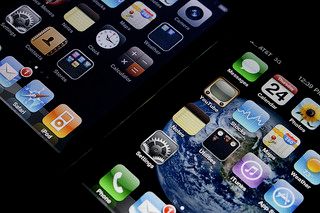China is a powerhouse in international trade, and as a result the U.S.-Chinese economic relationship has subject to plenty of political heat. But a recent Wall Street Journal piece calls into question orthodox interpretations of the trade imbalances. Many economists believe that one of the best ways for the U.S. economy to become healthier is to create more high-tech devices for international consumers. One such example, the iPhone, actually highlights some possibly fundamental problems with the way in which global trade is estimated. The iPhone is owned and designed by the American company Apple Inc. Parts for the iPhone are actually made in several different countries throughout Eurasia, which are then shipped to China where they are ultimately assembled into one cohesive product. The completed iPhones are then distributed from China to the U.S. We’ve been monitoring the international trade of the iPhone since 2008 when we broke the story about the launch of the 3G version. In all actuality, Chinese labor only accounts for about 3.6% of the overall cost of the iPhone. However, because trade calculations presently take only the final completed product traded into consideration, the iPhone is considered as a wholly Chinese export -despite the fact that the labor undertaken in China accounts for such a low percentage of the overall product cost. This unrealistic trade standard has actually increased the U.S. trade deficit to China by about 1.9 billion dollars. If the amount of trade was broken-down throughout the different countries with companies that participated in making parts for the iPhone, the U.S. would actually have a 48 million dollar trade surplus with China instead of the 1.9 billion dollar deficit. If trade regarding the iPhone was broken down, although the U.S. would have a surplus of trade with China, it would still have overall trade deficits with regards to the iPhone; the important difference being that these deficits would be with countries other than China. These alternate deficit values would be preferable though, because they would simplify the relationship between the U.S. and China by making trade both more equal and realistic. To read the full article by The Wall Street Journal, go to: http://online.wsj.com/article/SB10001424052748704828104576021142902413796.html#ixzz18FKpj6qD
Is the iPhone a Chinese product? We think not...
